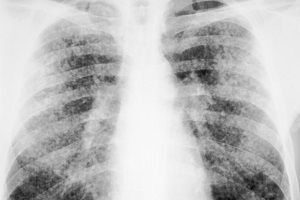CHEST RADIOGRAPHY

Overview
Chest radiography is an important tool in the medical surveillance of dust exposed workers. One of the most important applications is the identification of workers with pneumoconiosis so that they may be offered the appropriate work place interventions to minimize the chance of disease progression. Chest radiography is also used as a screening tool to determine the need for additional testing to confirm diagnoses, determine therapy, and evaluate impairment and disability. Chest radiograph images of dust exposed workers are classified according to the International Labour Office (ILO) International Classificaiton of Radiographs of Pneumoconioses, the most widely used standardized procedure to evaluate abnormalities. Data from these classifications is used by government programs and public health officials world wide to characterize pneumoconiosis in affected populations.
The NIOSH B Reader program undertakes to train and certify physicians in the ILO classification system. This training and certification has become even more important as new regulations promulgated by OSHA in 2017 in the United States have expanded the number of workers required to undergo medical surveillance to the large population of silica exposed workers, and who’s chest images must be classified by a NIOSH certified B Reader. This is in addition to the many workers already participating in surveillance due to asbestos and coal mine dust exposure.
NIOSH anticipates that the need for this important skill will continue to increase and encourages radiologists, chest physicians, occupational medicine physicians and other interested physicians to consider undergoing NIOSH training and certification to classify these images.
Chest imaging is a rapidly evolving area. This web site will be updated as new developments occur.
Please send any comments or suggestions for improvement to: chestradiography@cdc.gov. Include the phrase “chest radiography” in the subject line.




